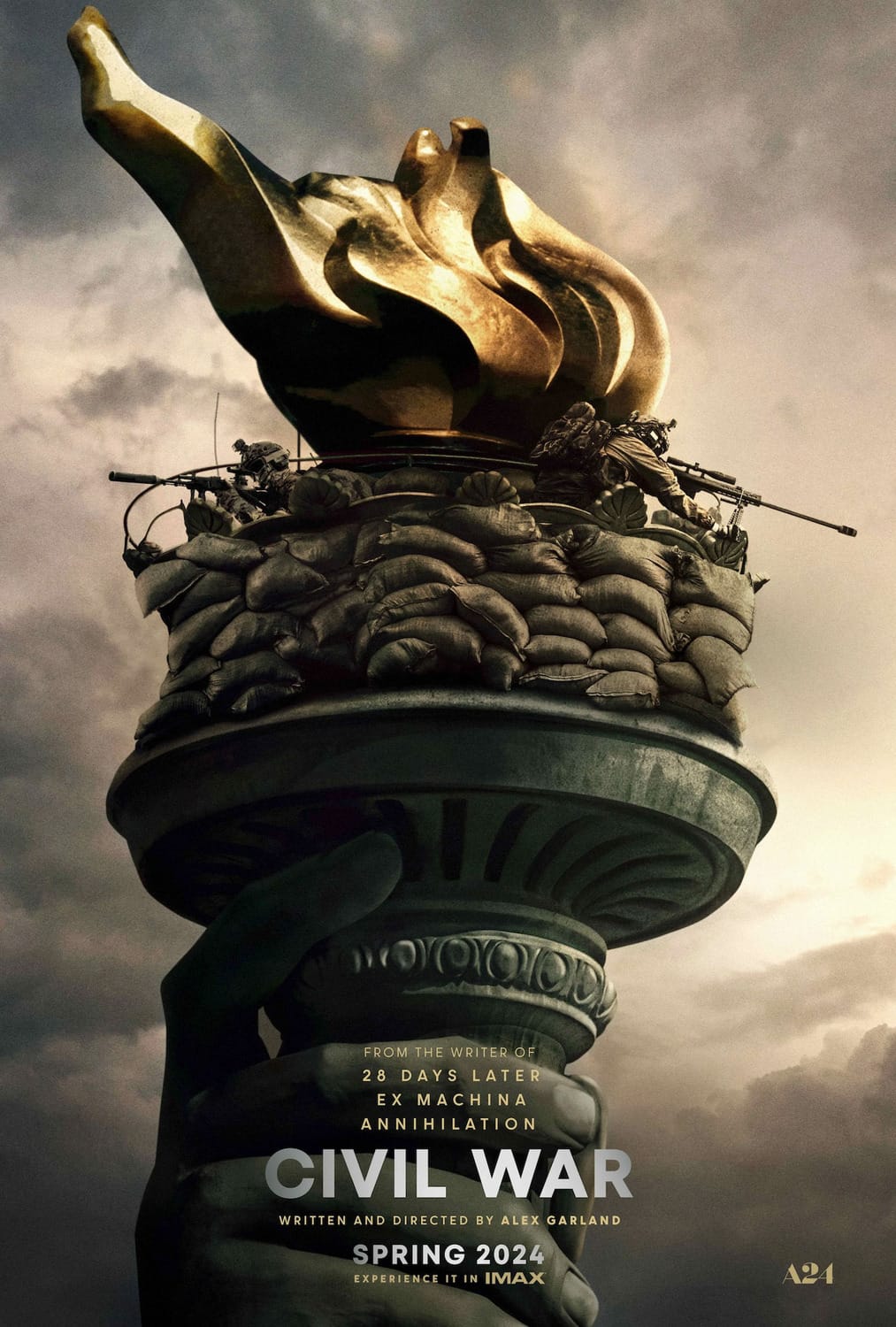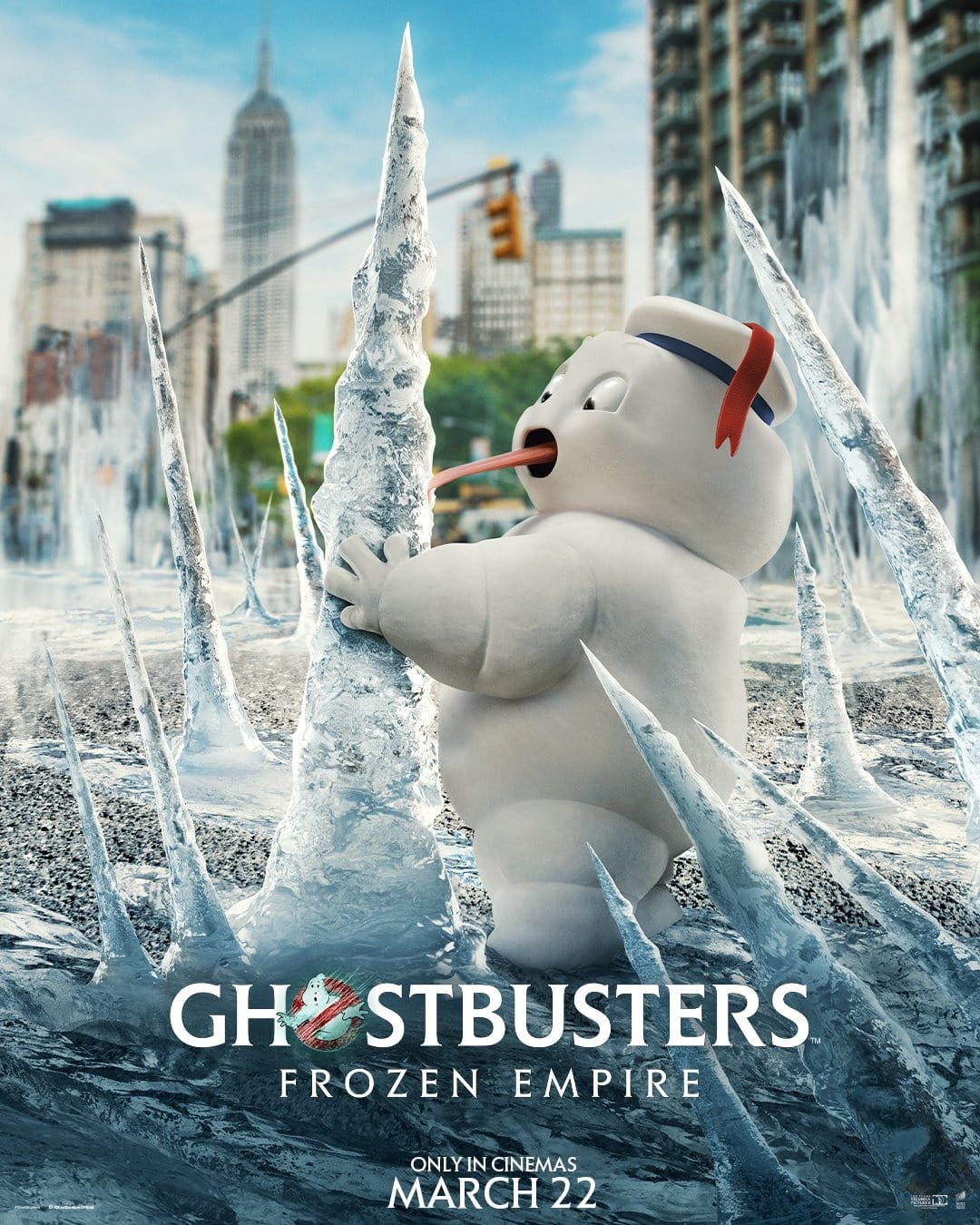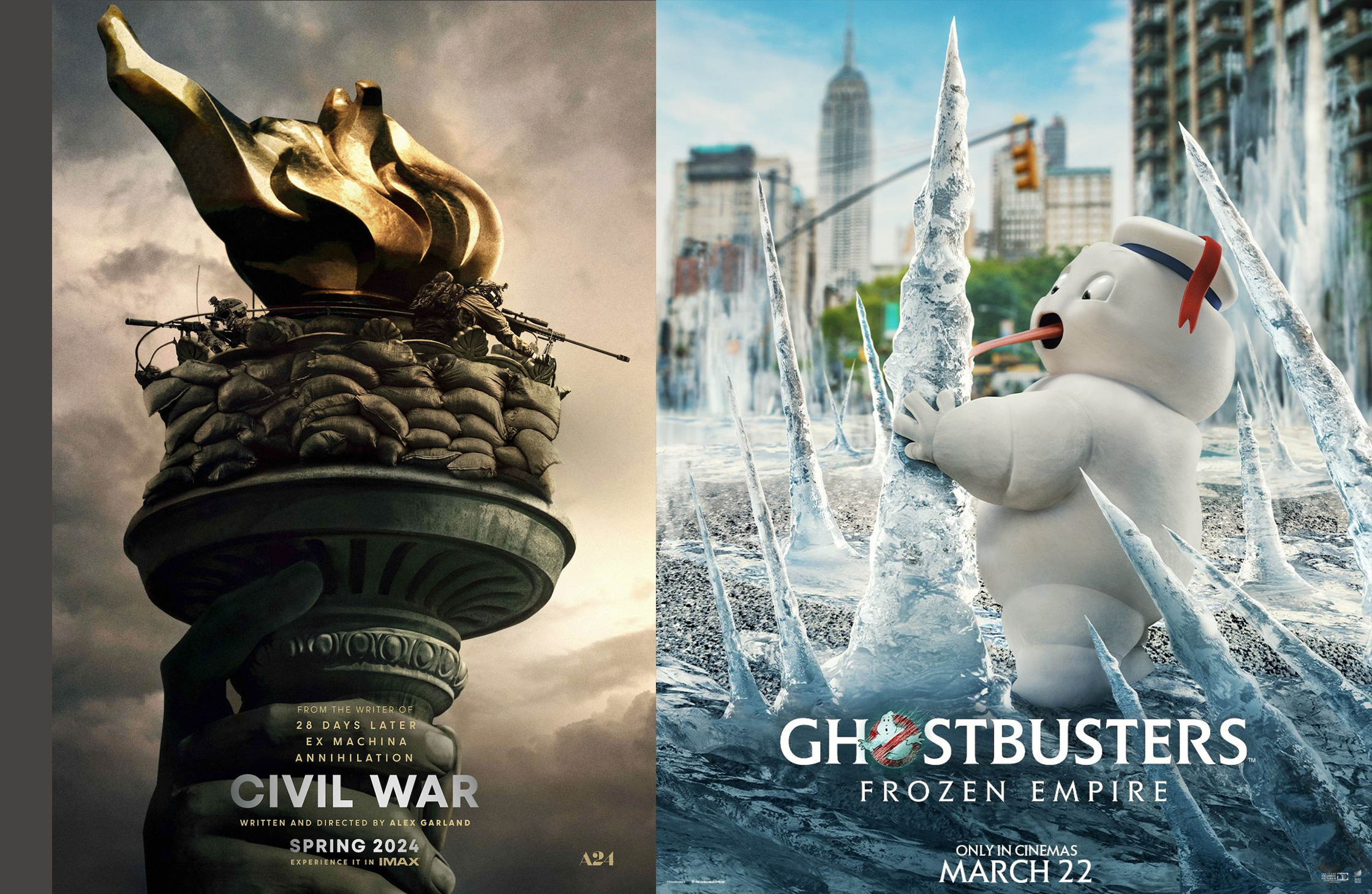
Civil War
It's almost impossible to find anything that most Americans will agree on these days, but it has become a truism across the entire political spectrum that the citizens of the USA are more bitterly divided than they have been for almost 150 years. Rational debate seems to have been abandoned completely, as people increasingly retreat to their online silos to hurl insults at each other. Extremism, fueled by misinformation and propaganda, is on the rise, as is the increasingly violent rhetoric of certain elements of the extreme political right, who have been so thoroughly addled by the constant torrent of lies that no one can even agree on objective reality anymore.
This is not the place for an examination of how the USA reached this crisis of identity, but such is the backdrop against which filmmaker Alex Garland released Civil War, an unflinching snapshot of a near-future America at war with itself. As the film opens, veteran war photographer Lee Smith (Kirsten Dunst) is in Brooklyn, New York, risking life and limb to record a brutal riot which becomes a scene of carnage after being infiltrated by a suicide bomber. Acting on instinct, she saves the life of aspiring young photojournalist Jesse (Cailee Spaeny). Lee, her aging mentor Sammy (Stephen McKinley Henderson), and her swaggering, hard-drinking colleague Joel (Wagner Moura), set off the next day on a dangerous road trip to Washington, DC with the intention of interviewing the despotic, authoritarian president (Nick Offerman) before he is deposed by the advancing forces of the Western Alliance (an unlikely partnership between California and Texas). Unaware that Jesse has persuaded Joel to allow her to tag along for the ride, Lee is less than pleased to find herself playing mentor to a naïve student, as the road to DC takes them into increasingly dangerous territory.
What unfolds over the film's 109 minutes is not the political polemic one might expect. There are no ‘sides’ here; Garland presents war-torn America as a horrific fact, not a pulpit from which to preach. The film is much more concerned with the toll that war inevitably takes on those whose jobs is to tell the story. As the world-weary, cynical Lee and her companions travel further into the combat zone in search of the rogue president, Civil War feels reminiscent of Coppola's Apocalypse Now, with the road to Washington as a stand-in for Vietnam's Nung River — it's a journey ever-deeper into hell, reflected in the bitter mask of Lee's face. The film's entire message is brutally summarised in one savage, deeply-shocking scene in which the journalists encounter a mid-ranking officer of an unspecified army (a devastating cameo by an uncredited Jesse Plemons) engaging in an orgy of ethnic cleansing. It's a moment that stays with the viewer long after the credits have rolled, and deliberately so.
Civil War offers no answers, and asks very few questions. What it does do is paint a visceral, horrifying, unflinching portrait of what a war-torn USA would actually look like, and that itself is the message: This could happen. It's up to us to make sure it doesn't.

Ghostbusters: Frozen Empire
Nostalgia, as they say, ain't what it used to be. It's difficult to ascribe any other motive to Hollywood's repeated attempts to reboot and resurrect Ivan Reitman's classic 1980s duology featuring a team of wisecracking paranormal exterminators. Following 2016’s financially-calamitous attempt to reboot the franchise in an alternative universe with an all-female team donning the legendary Proton Packs, one would have been forgiven for thinking Ghostbusters had been given its last rites (so badly did the movie bomb at the box office). In 2021, however, a direct sequel to the original movies arrived in the form of Ghostbusters: Afterlife, which served to pass the mantle on from the original cast to a new generation in the form of the descendants of O.G. ghostbuster Egon Spengler.
Ghostbusters: Frozen Empire finds the franchise in much more familiar territory than its predecessor. Whereas Afterlife seemed oddly lost in the open plains of Oklahoma, Frozen Empire brings back a lead character more central to the Ghostbusters mythos than any actor: New York City itself. The opening shot brings us right back to the Manhattan firehouse where it all began 40 years ago. After a brief flashback to 1904, we're back in the present day, where we find the Spengler family (Egon's daughter, her teenage kids, and her ex-teacher boyfriend) taking up residence and becoming the de-facto ‘New Ghostbusters’ of Manhattan.
The old guard are still in evidence, though, and it's not long before trouble arrives at Ray's Occult Books (where original Ghostbuster Ray Stantz is quietly approaching his golden years) in the form of a mysterious brass orb radiating huge amounts of paranormal energy. Ray brings in his old buddy Winston Zeddemore (now a billionaire philanthropist) to help research the object, and what they discover threatens to unleash a frozen apocalypse which would encase the world in an icy tomb.
The movie unfolds in a way which detractors might reasonably say is essentially a rehash of the original movie, but originality was never the point. This is pure, distilled nostalgia, and unapologetically so. A prime example is a lengthy expository scene in the New York Public Library where occult librarian Hubert Wartzki (Patton Oswalt) details the origins of the movie's ‘big bad’. It's a load of preposterous guff, of course, but so was Gozer The Destructor. It's the setting that matters: the dusty shelves of long-forgotten tomes, the terse staff sneering at Dan Aykroyd, the stone lions guarding the entrance, and even a cameo by the library ghost from the first movie! It all adds up to a maximum-dose nostalgia hit.
The new cast all deport themselves admirably, although only Mckenna Grace as 15-year-old Phoebe is given anything substantial to do; a subplot involving her and the ghost of a dead 16-year-old girl is touching, and gives the movie its only real emotional depth. Also noteworthy is English comedian James Ancaster playing a nerdy researcher, clearly channelling Michael Caine's Harry Palmer right down to the accent and the glasses.
Anyone looking for ground-breaking originality or a thrilling plot is going to be sorely disappointed here, but for those ‘of a certain age’ seeking to spend two hours as the 12-year-olds we were in 1984, this is the closest the Ghostbusters franchise has come yet to transporting us back there.
Recently arrived in the Tri-Cities from Scotland, Damian Beagan is a former freelancer who has written music and movie reviews for UK websites.

